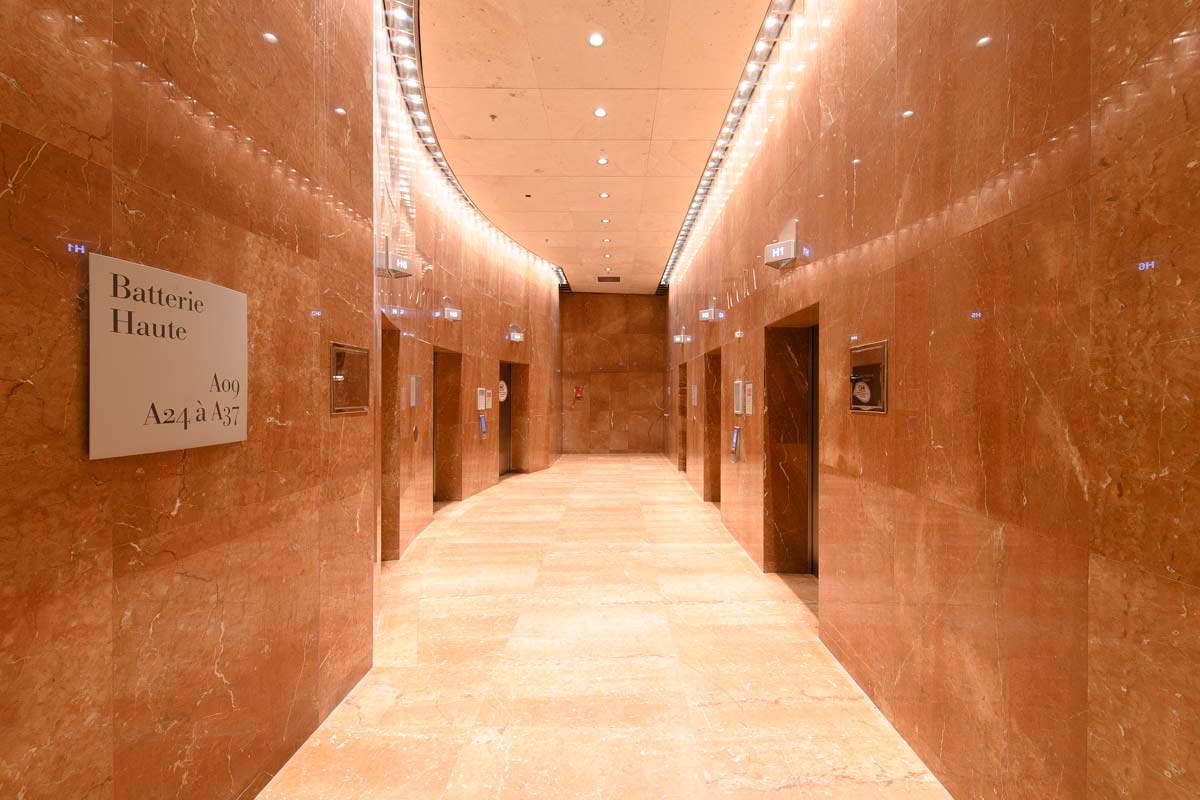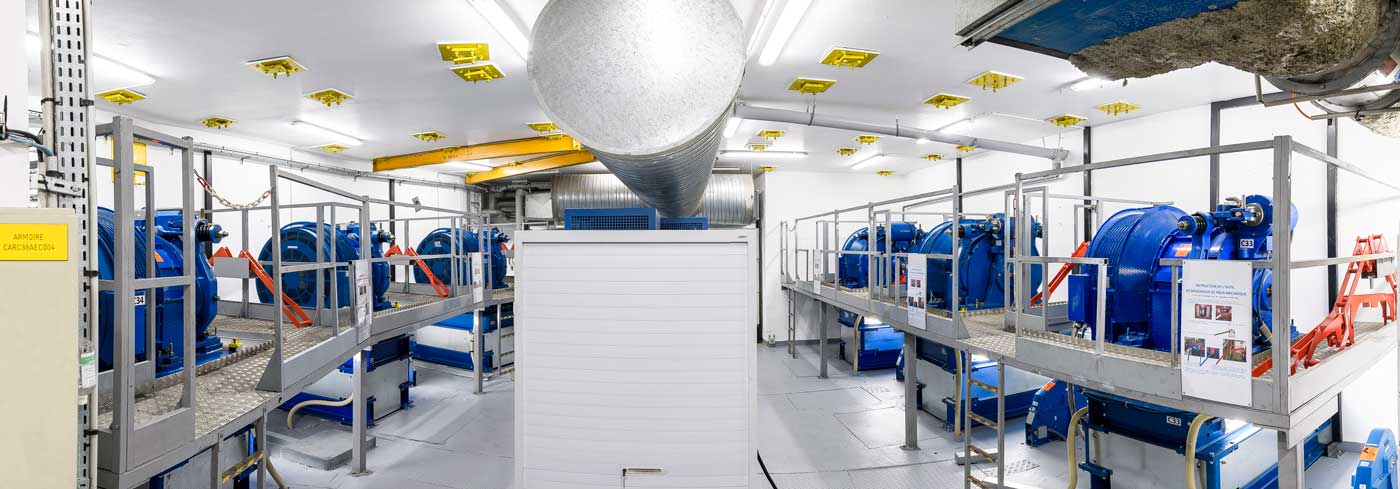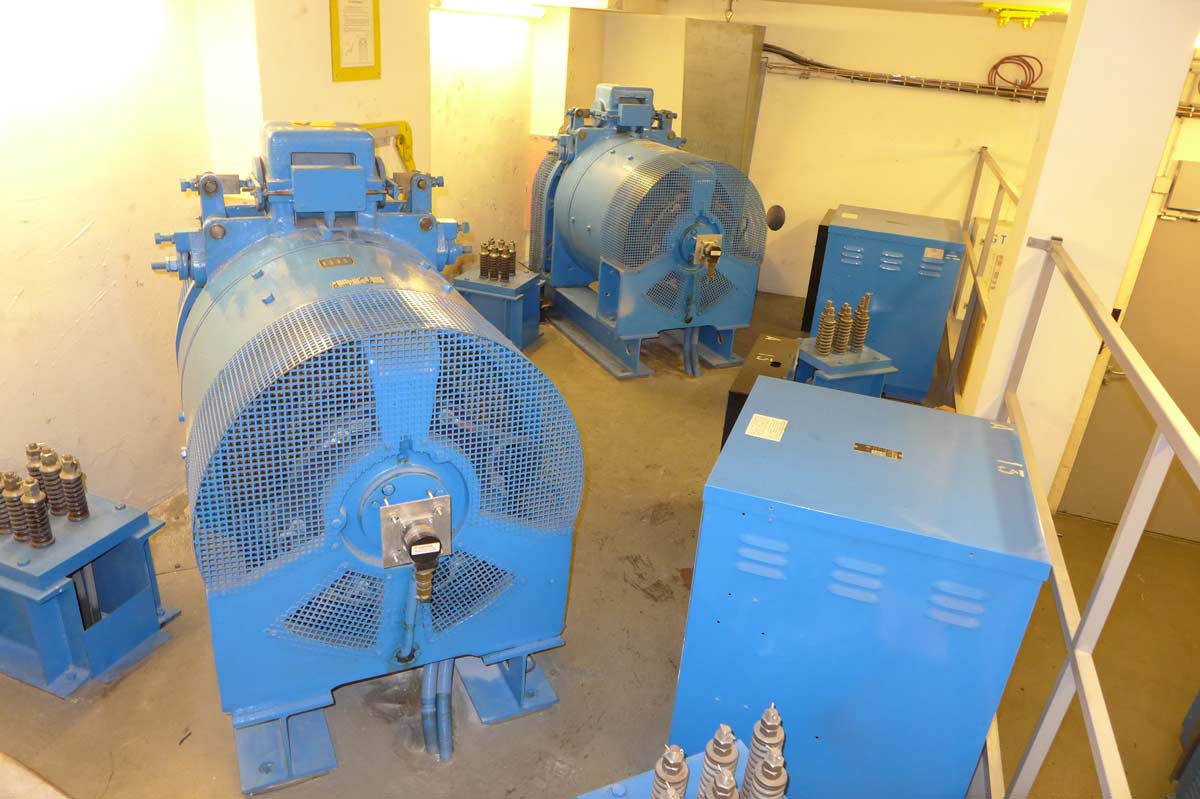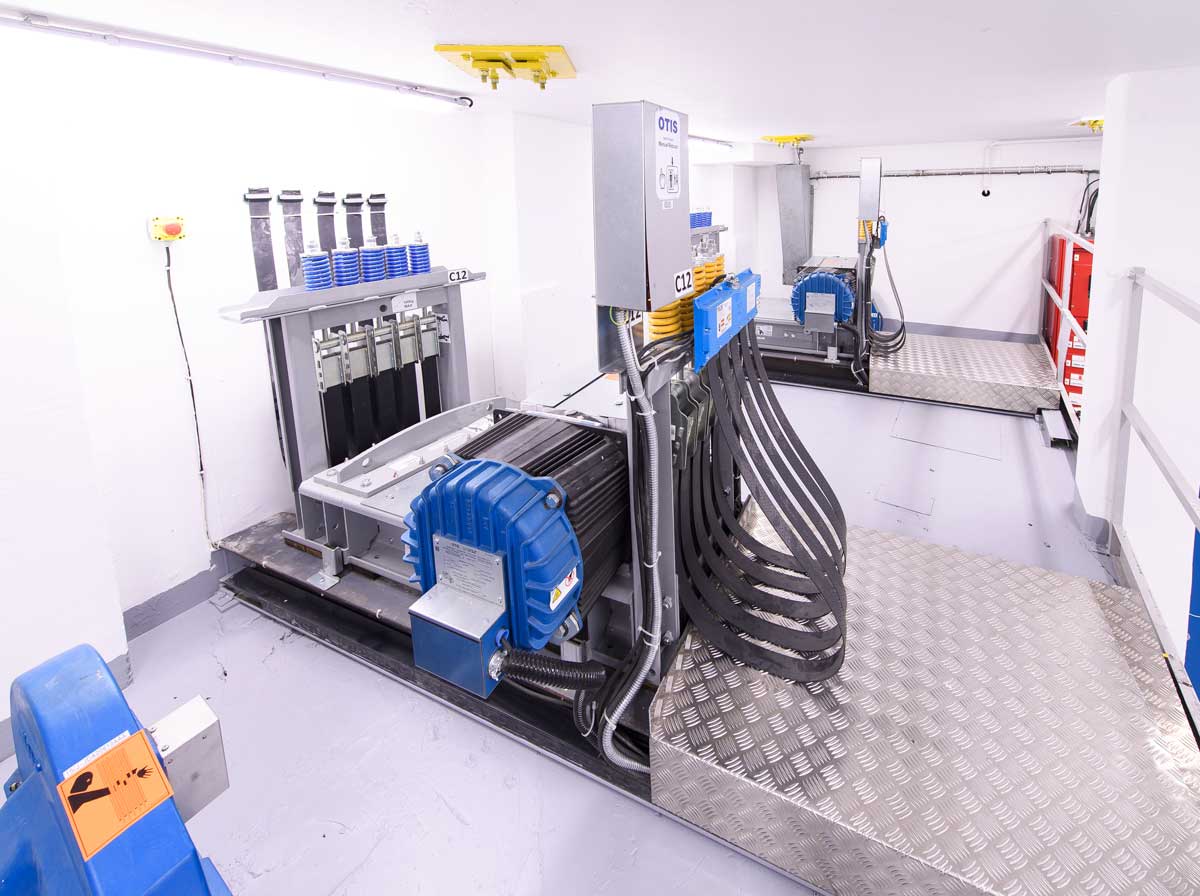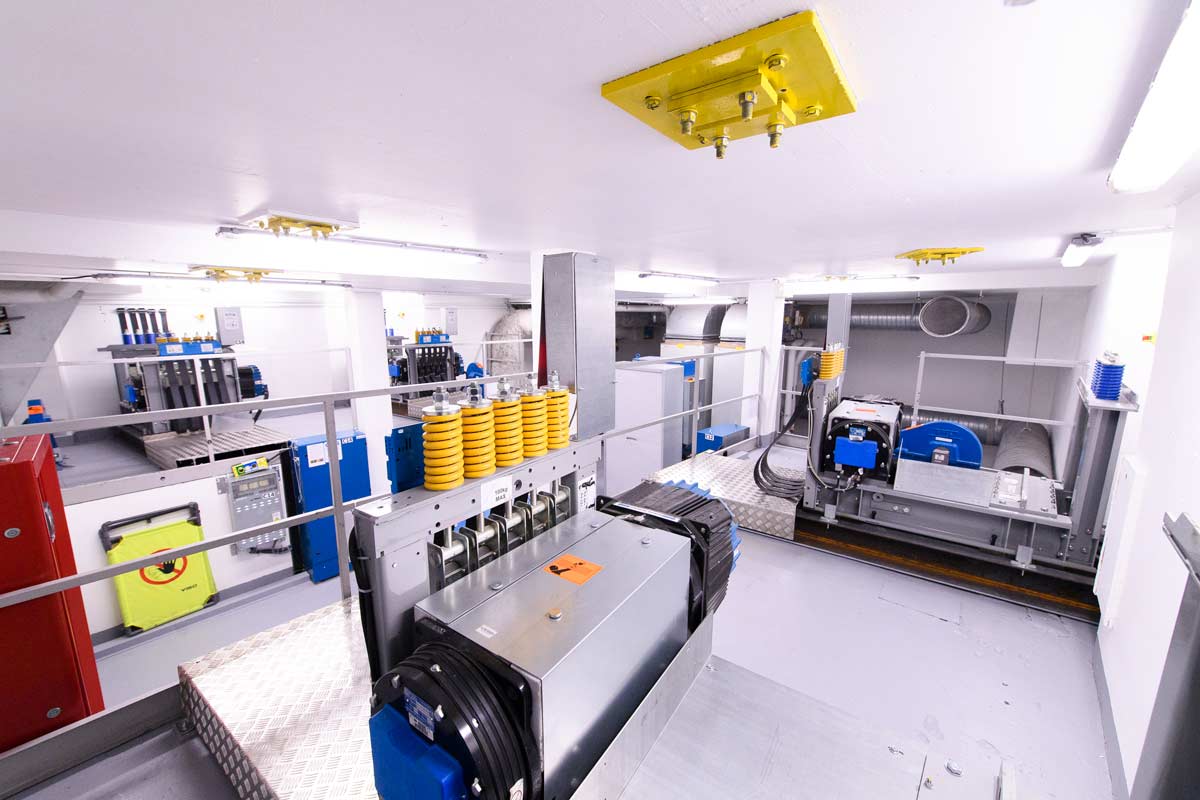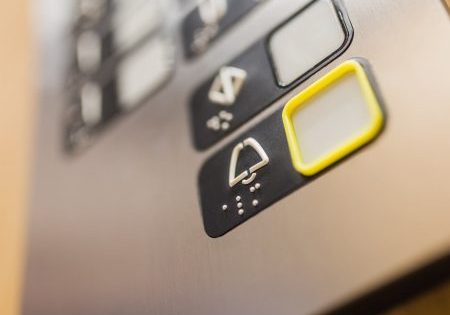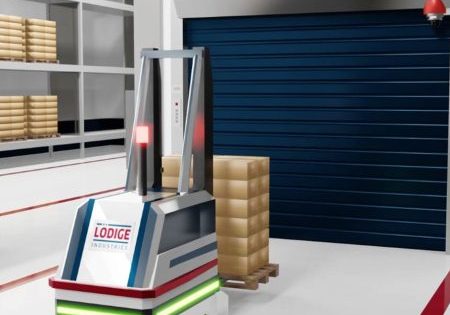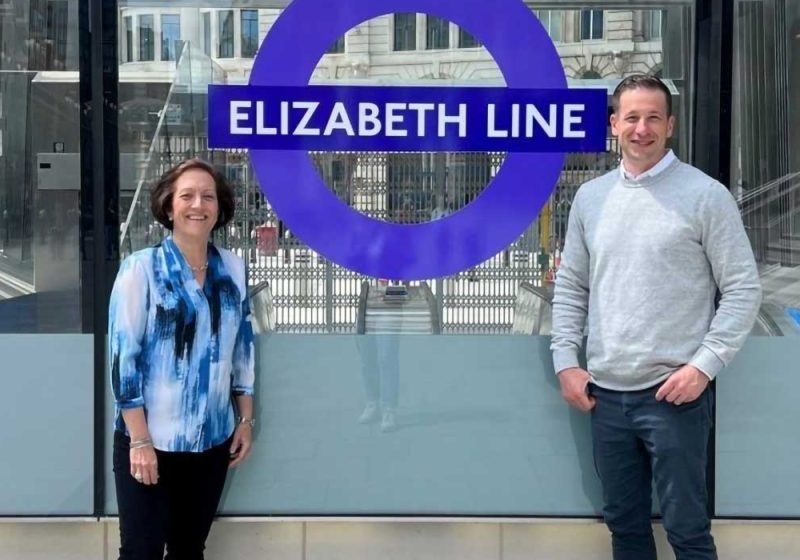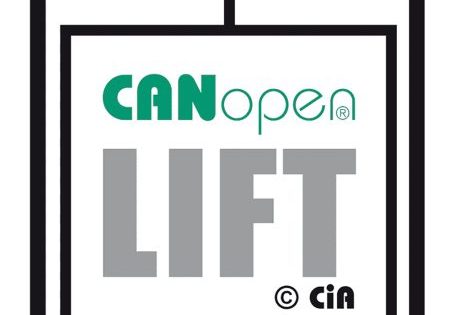A Mix Of Old And New
Mar 6, 2023

Elevator Modernization Project In A Fully Occupied And Functional Office Building In France
by Olivier Rouvière
The Société Générale Towers in La Défense, Paris, France, were constructed in 1995 to meet the need of one of France’s largest banking companies to bring its then approximately 5,400 employees — at the time scattered in about 50 different locations — into one site.
The building is comprised of twin office skyscrapers named Chassagne and Alicante. The towers are 36 and 37 floors, respectively, topping out at nearly 548 ft (167 m), and are separated by about 130 ft, connected at the base by a series of trading rooms in the heart of the building.
The towers are both beveled half-cylinders with sharply inclined roofs. While the buildings are symmetrical and their exteriors are identical, a major difference is in their interior design, which also gives them their names. The Chassagne tower uses a beige marble with stone from the French village of Chassagne, while Alicante is adorned with red marble from Alicante, Spain.
The original elevators in the Société Générale towers were installed by Otis, representing the largest new equipment project for Otis France at the time. It was a technical and technological feat with elevators that moved at speeds up to 6 m/s and a maximum rise above ground of over 160 m.
The global workplace has seen much change in the past 25-plus years. When Société Générale selected Otis to modernize the entire fleet of original Otis elevators in the building, they stated the objective of “designing future-ready mobility in the buildings.”
The bank’s new goal for the now 7,100 employees on-site was to move to a flex-office organization, where office space would be better and more fully utilized. The primary objective of the modernization was to increase the long-term performance of the elevator system and to optimize passenger traffic to reduce peak hour waiting times for the growing number of building occupants.
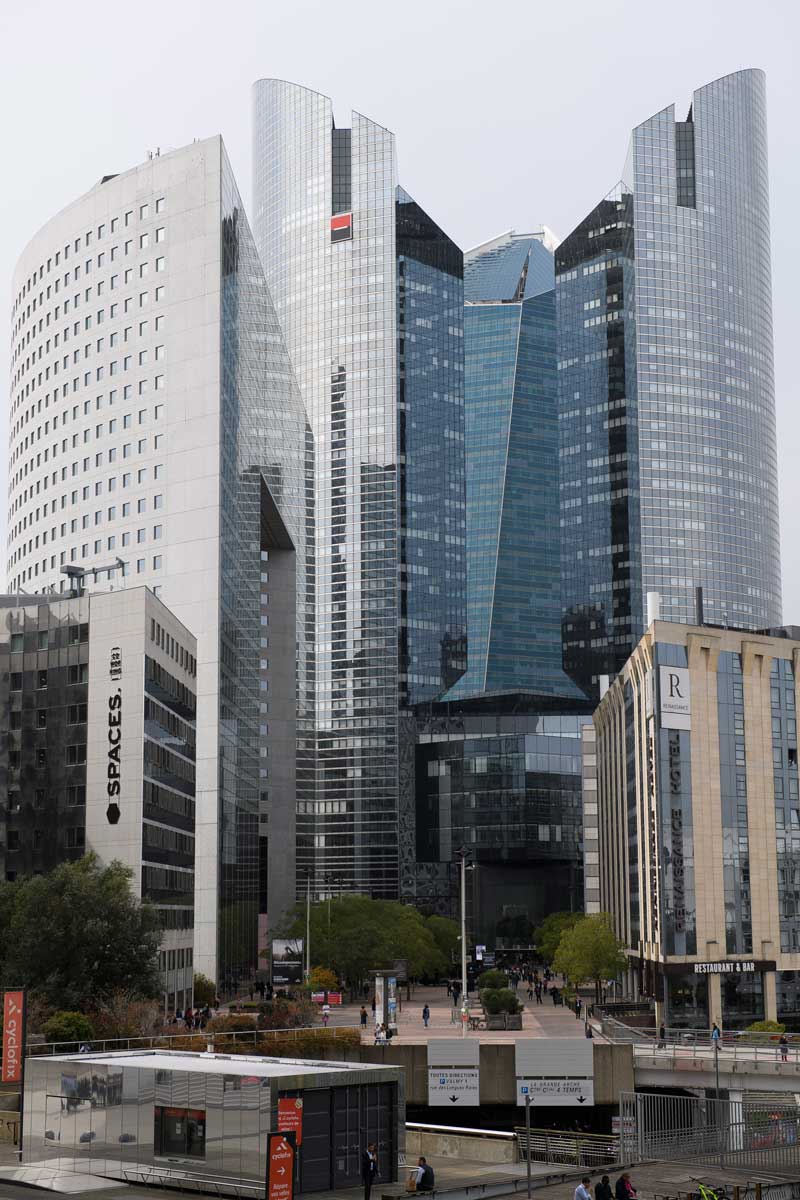
Otis overcame multiple challenges in carrying out this major modernization project. The most important among them was to perform the elevator modernization with minimal disruption to occupants, as the towers were still occupied during the entire work period. This meant operating both the original and the modernized elevators at the same time — technologies that were created more than 20 years apart. Otis crews also assembled elevator motors inside the machine rooms — a unique and important part of this project.
Started in 2018 and completed in January 2022, the modernization involved 55 elevators that were upgraded to Otis SkyRise® and Gen2® technologies. Otis also added its CompassPlus™ destination dispatch system, which was installed in advance of major modernization work to smooth the process and improve the passenger experience.
VT System Description
In new building construction, elevator and escalator integration is part of a comprehensive build with challenges resulting from coordinating work schedules, material delivery and the corresponding work and coordination with all other trades.
Modernization presents a different set of challenges in coordinating with owners, tenants, building occupants, visitors and other contractors. For the modernization of the Société Générale towers, this coordination was especially important because most of the vertical-transportation (VT) work had to be accomplished during the day, with as many as 4,500 people needing to be transported up and down every day.
The modernization was completed in two phases. Phase one consisted of deploying CompassPlus dispatching on the existing equipment. Phase two involved modernization operations in both towers simultaneously. Otis Regional Director Bruno Gabrych said:
“Being able to control the constraints of intervention in an occupied environment and a relentless priority to safety were our major strengths, as well as our know-how and experience in high-rise installation.”
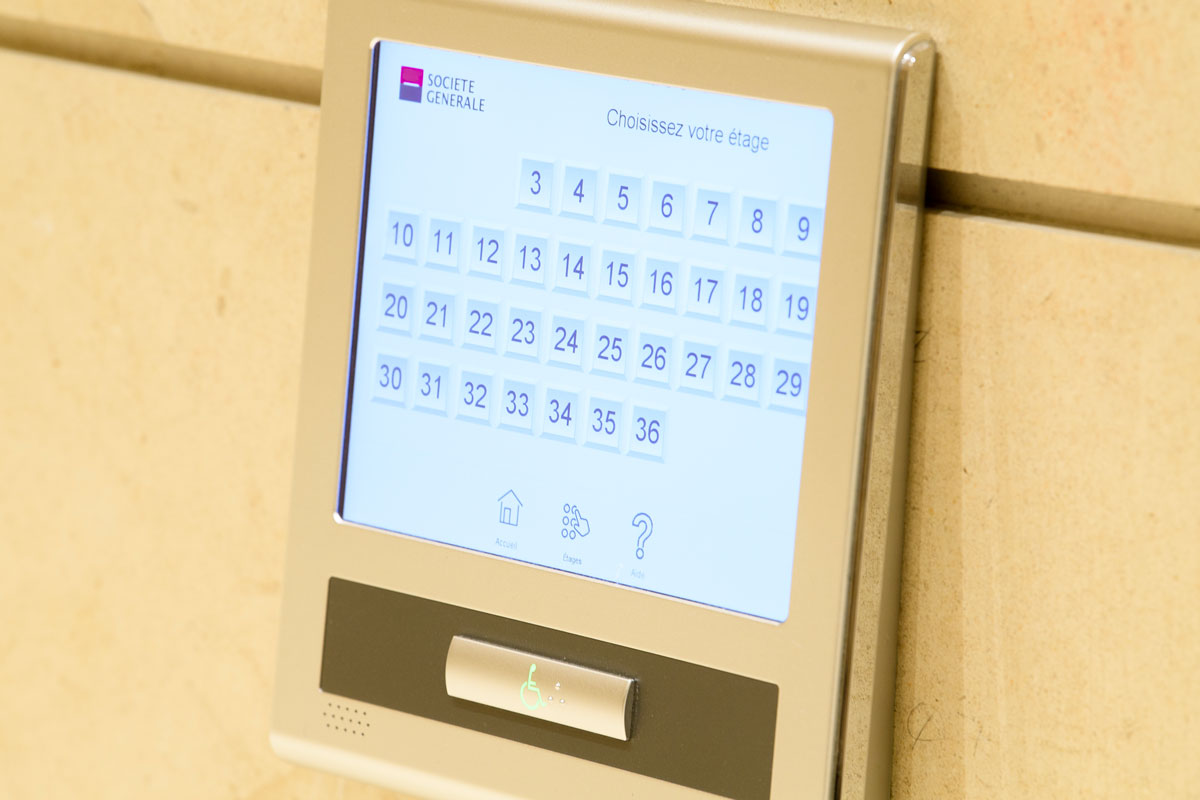
The elevator system for the campus is composed of 55 elevators total. That includes 32 units (16 in each tower) for most passenger traffic and 23 elevators that serve parking areas, kitchens and storage, including eight freight elevators.
Otis conducted passenger flow studies to understand traffic in the towers and in the lobby that serves both towers. This provided the basis for planning modernization work with minimal passenger disruption and to determine the correct locations to position the CompassPlus touchscreens.
Within each tower, the 16 primary passenger elevators are distributed as a group of four serving the lower floors, a group of six for the middle floors and a group of six for the highest floors. To keep occupants moving efficiently throughout the building, one elevator unit from each group was taken out of service at a time for modernization, ensuring that the other elevators in the group were always available. This presented a technical challenge in developing a system for the original Elevonic 411 model lifts to work alongside the updated SkyRise or Gen2 elevators in the same group. Modernization Director Benoît Longuet explained:
“The major challenge in an occupied environment is to be able to maintain the service rate, in particular through the coexistence of old and new technologies, in order to avoid affecting passenger traffic. In short, we had to make technologies that are 20 years apart work together.”
This is where the first phase of the project — installing the CompassPlus destination dispatch solution — became so valuable. Not only would CompassPlus dispatching improve the performance of the elevators to mitigate the effects of taking one unit from each group out of service, but it would also allow for the operation of both the old and new elevators together.
In addition, Otis customized the CompassPlus displays for Société Générale so passengers could find their bearings easily. It was one component of an overarching communication campaign with building occupants to keep them informed of the project’s progress and how to best navigate the building during modernization.
For the second phase of the project, among the 32 primary passenger elevators, those serving lower floors were upgraded to Otis Gen2 elevators with the Gen2 Mod solution, while the groups serving the mid-level and upper floors were modernized to Otis SkyRise high-rise elevators.
Otis’ best-selling model with more than 1 million sold, the Gen2 elevator has been maximizing space savings and energy efficiency and providing exceptional performance with a smooth, quiet ride for more than 20 years. Gen2 Mod is a custom-made package of components and materials designed to meet the specific needs of existing buildings and upgrade to the latest Gen2 functionalities.
The primary objective of the modernization was to increase the long-term performance of the elevator system and to optimize passenger traffic to reduce peak hour waiting times for the growing number of building occupants.
The SkyRise elevator is Otis’ most advanced high-rise elevator with an efficient permanent-magnet machine and a state-of-the-art controller that employs a patented motion-control algorithm to ensure a smooth ride. SkyRise technology is designed to meet the specific requirements of high-rise mobility in terms of travel speed and maximum rise.
Both Gen2 and SkyRise elevators come equipped with ReGen™ drives, which capture energy that would otherwise be lost and convert it to electricity that is fed back into the building’s electrical grid, providing significant energy savings. For example, a Gen2 elevator machine with a ReGen drive uses 75% less energy than a conventional machine without a regenerative drive.
One unique component of this project was that the SkyRise elevator machines couldn’t be delivered fully assembled to the machine rooms because of their size and weight. They had to be assembled on-site. Designed for new equipment projects, these machines are usually delivered to the machine room with a crane. For this modernization, the 24 4-T machines were brought up in pieces and assembled inside the narrow machine room. Thanks to the expertise of Otis technicians, the towers benefit from the SkyRise elevator, which is usually only available for new buildings.
In addition to the technical elements of the job, safety was a top concern while conducting the modernization in an occupied environment. The approach of modernizing one elevator at a time in each bank was made possible by the use of a “safety bridge.” This Otis-patented technology was first used in France in 2010 and allows passengers to safely transfer from one car to another in the hoistway in the event of an emergency.
This solution is used in high-rise office buildings with “express areas,” or floors without hall doors serving those hoistways because the cars don’t stop there, to ensure fast and efficient journeys to the highest floors. Here’s how it works: For a group of three elevators (A, B and C), while car B is being modernized, cars A and C can still operate safely thanks to the safety bridge, which allows passengers to move from car A to C if car A encounters an issue and stops during a ride. Once in car C, passengers can then be released safely to another floor. While in place for safety reasons, there were no incidents during this modernization that required passengers to use the safety bridge.
For all these reasons, this modernization project is a flagship project for the company. Otis Director of Service Operations Stéphane Roussel said:
“This project is a benchmark for Otis due to the complexity of the installation and the use of our latest technologies in a building that absolutely could not suffer from traffic degradation. The Otis team came together to provide what has been recognized as an extraordinary achievement.”
In more than 30 years with Otis, Olivier Rouvière has never stopped progressing with leadership positions in field, production and management roles. After serving as a branch manager and then a regional manager in France, he was named general manager of Otis Switzerland in 2010. In 2017, Rouvière’s duties expanded to include Belgium and Luxembourg. In January 2019, he returned to Paris to lead Otis France. His responsibilities were expanded to Belgium, The Netherlands and Luxembourg in 2022. With iconic projects including the Eiffel Tower, the Grande Arche, several iconic buildings in Paris’s La Défense business district and future public transportation stations around Paris, the Otis Western Europe portfolio includes sites that represent deep expertise.
For a number of years, Rouvière considered a career as a professional soccer player. Always a sports enthusiast, these days he runs, rides bikes in the mountains and skis regularly. His commitment and sense of teamwork reflect on his work at Otis. Rouvière trained as an engineer, graduating from INSA Lyon in microelectronics. He also holds a DEA in integrated electronics from the École Centrale de Lyon and completed an INSEAD Global Leadership Development program in 2014.
Get more of Elevator World. Sign up for our free e-newsletter.
